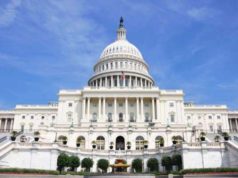
Introduction
The filibuster is one of the most famous and controversial procedures in the United States Senate. This tactic allows Senators to delay or block legislative action by speaking for an extended period of time. The filibuster has been used throughout the history of the Senate, and has been the cause of many famous moments of Senate drama.
History of the Filibuster
The origins of the filibuster can be traced back to the early days of the Senate, when there were few rules governing its operations. However, it wasn’t until the 20th century that the filibuster became a regularly used tactic. Throughout the 20th century, the use of the filibuster increased, with some Senators using the tactic to block civil rights legislation and other important reforms.
Recent Controversies
In recent years, the use of the filibuster has come under increased scrutiny. Some argue that it has become a tool for obstruction rather than a legitimate mechanism for debate. For example, in 2009, Senate Republicans used the filibuster to block the confirmation of several of President Obama’s judicial nominees, a move that many saw as a violation of the Senate’s role in the confirmation process.
Efforts to Reform or Eliminate the Filibuster
Efforts have been made to reform or eliminate the filibuster, but these efforts have thus far been unsuccessful. For example, in 2013, Senate Democrats voted to eliminate the filibuster for most presidential nominees, but left it in place for Supreme Court nominees and legislative business.
In 2021, there has been renewed debate over the filibuster, with some Democrats calling for its elimination in order to pass key pieces of legislation such as voting rights reform and the infrastructure bill. However, others argue that the filibuster is an important part of the Senate’s democratic process, and that it should be preserved.
Conclusion
The filibuster is a controversial procedure in the United States Senate, with a long and complicated history. While some argue that it is a legitimate mechanism for debate and deliberation, others see it as a tool for obstruction that has contributed to the dysfunction of Congress. As the Senate continues to grapple with the challenges of divided government and a polarized political landscape, the future of the filibuster remains uncertain.
A filibuster is a tactic that can be employed by a Senator, or a group of Senators, that is allowed by the rules created by the Senate itself. A filibuster essentially is an obstructive tactic that is employed in the attempt to prevent a particular motion or resolution to be brought to a vote by the members of the Senate.
Though there are several types of the filibuster, the most commonly used involves the Senator extending the debate. Senators can literally speak for as long as they want and about any particular topic they choose. The only way to successfully end a filibuster is by achieving a three-fifths vote of the chamber to put an end to the debate. The longest filibuster in the history of the Senate lasted a total of twenty-four hours and eighteen minutes.

























